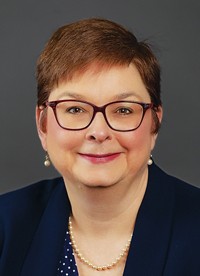Advertisement
Grab your lab coat. Let's get started
Welcome!
Welcome!
Create an account below to get 6 C&EN articles per month, receive newsletters and more - all free.
It seems this is your first time logging in online. Please enter the following information to continue.
As an ACS member you automatically get access to this site. All we need is few more details to create your reading experience.
Not you? Sign in with a different account.
Not you? Sign in with a different account.
ERROR 1
ERROR 1
ERROR 2
ERROR 2
ERROR 2
ERROR 2
ERROR 2
Password and Confirm password must match.
If you have an ACS member number, please enter it here so we can link this account to your membership. (optional)
ERROR 2
ACS values your privacy. By submitting your information, you are gaining access to C&EN and subscribing to our weekly newsletter. We use the information you provide to make your reading experience better, and we will never sell your data to third party members.
Careers
Organic Chemistry Fellowships
March 26, 2007
| A version of this story appeared in
Volume 85, Issue 13
As past-chair of the Division of Organic Chemistry, I would like to respond to the three letters to the editor that addressed the gender distribution of Division of Organic (DOC) Fellowships (C&EN, Jan. 15, page 8). I would like to describe the fellowship competition, suggest that DOC consider whether its procedures may be improved to remove any inadvertent biases, and call for more active participation by the community in this program and in others that support our discipline.
The DOC executive committee administers fellowships that are donated primarily by pharmaceutical and chemical companies; there are a few special donors (organicdivision.org/fellowships.html). A nomination from the student's thesis adviser is supported by two additional letters, a résumé, and a four-page review by the nominee. A committee of two members of the DOC executive committee and one representative from one of the donors reviews the nomination packets and recommends a list of fellows to the executive committee for approval.
In the 2005-06 competition, 10 out of 48 nominees were women; one of 18 fellowships was awarded to a woman and one fellow had a female adviser. Concerns about this unusual result were discussed during the executive committee review. In the 2006-07 competition, 17 out of 59 nominees were women; three of 14 fellowships were awarded to women, two of whom had female advisers. In the more than 20 years that the fellowship program has been functioning, 68 of 319 fellowships have been awarded to women and 16 of the fellowship winners had female advisers.
According to the 2005 Survey of Earned Doctorates, 34% of chemistry Ph.D.s were awarded to women. However, only 25% of those degrees were awarded to women in organic chemistry (see www.nsf.gov/statistics/nsf07305/tables/tab2.xls). Thus, one might conclude that the DOC fellowship program is not egregiously inconsistent with the likely pool of nominees. Nevertheless, a picture is worth a thousand words, and the C&EN picture gallery was an attention-getter. Furthermore, it is not unreasonable to assume that the DOC selection process, like others (see J. Women's Health 2005, 14, 684), is unintentionally biased and can be improved. Consequently, I will take a list of suggestions for changes in the nomination and selection procedure to the next DOC executive committee meeting.
In conclusion, I would like to make two points. First, in all "contests," one must apply or be nominated to be considered. This means a reasonable amount of work for someone—in the case of the DOC fellowships, the nominee and his or her mentor must commit both time and thought. However, one cannot be selected if one is not in the applicant pool. Second, DOC is a volunteer organization and would be improved by input from more of the membership, particularly from members with diverse interests.
I strongly urge concerned members of the division to become actively involved in one or more of the DOC projects by conveying their willingness to serve by e-mailing the office of the current secretary-treasurer, Gary Molander, at orgdiv@sas.upenn.edu.
Kathlyn A. Parker
Stony Brook, N.Y.






Join the conversation
Contact the reporter
Submit a Letter to the Editor for publication
Engage with us on Twitter